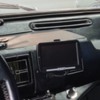Jffr you are right, you don't have to vary the fuel pressure. Jeep and Dodge systems put the fuel pump , filter , and pressure regulator in the basket in the tank. There is no reference to the manifold pressure and runs around 39-40 psi all the time.
With a reference line showing in the photo I had assumed it is not a dummy. A 1/8 inch pipe plug or a rubber cap from the auto parts store would blank it off if not in use. They do make regulators without reference as well. They also make regulators that are not 1 to 1 but don't know how or when they are used.
I have seen a equalizing chamber with spider legs to each throttle body used on IR systems. I would expect with out one the engine would be running alpha n fueling. MAP sensors can be directly mounted to a manifold or remotely mounted with a rubber hose. Another thing to check. A rotten or split hose would mess things up here.
I would expect a back fire to be tough on a MAP sensor.
A digital dash on a tablet or phone would be a help here.
I think the Speed Pro system is now part of F.A.S.T.
Looking for bent throttle blades might be jumping the gun.



